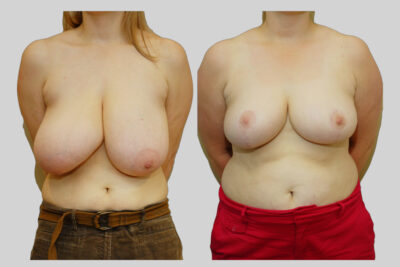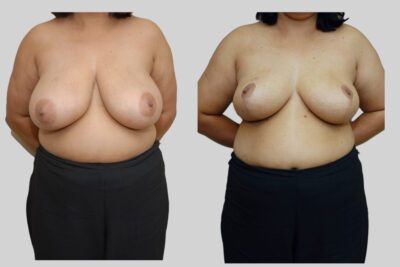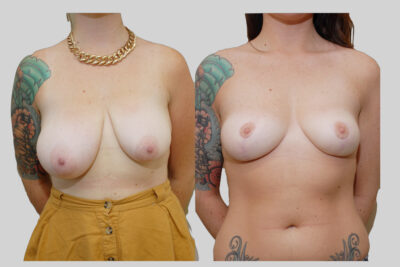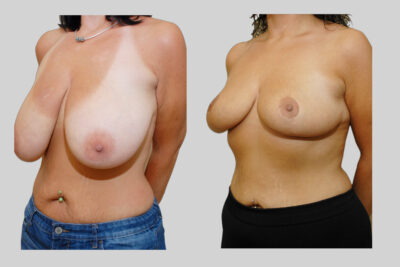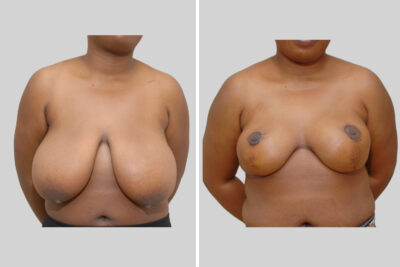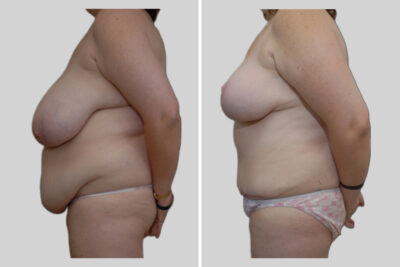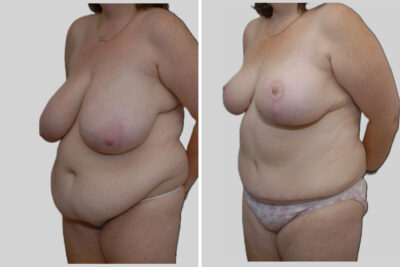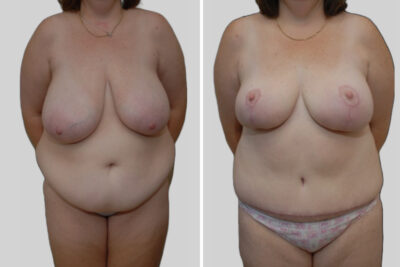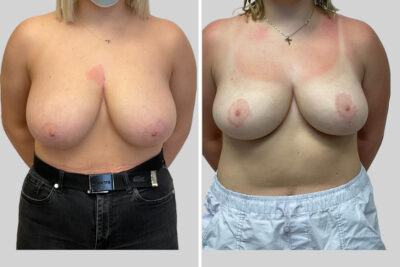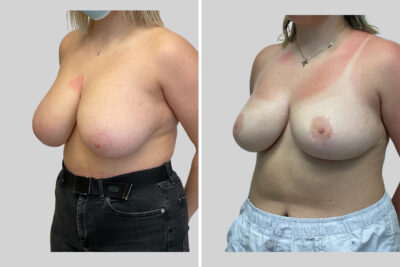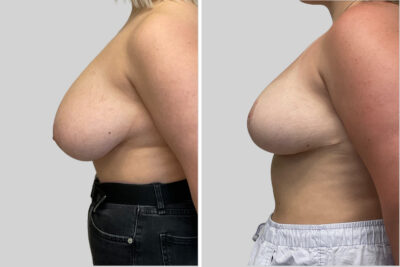Breast Lift With Reduction ( Reduction Mammoplasty)
What is breast reduction?
Breast Reduction is a procedure that aims to reduce the size of breasts that cause symptoms such as neck, back and shoulder pain, or bra-strap-grooves. Women with excessively large breasts also often suffer from social effects due to embarrassment or unwanted attention. Physical activity can also be limited since activities like jogging and sports like tennis can cause pain and social discomfort. Breast Reduction surgery is similar to Breast Lift (Mastopexy) in many ways, and it also has the benefit of lifting the breast. Large breasts often develop significant sagging, and so this cosmetic benefit is a pleasant effect of this surgery in addition to the improvement of physical symptoms.
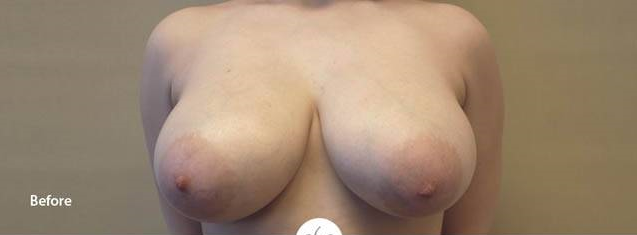
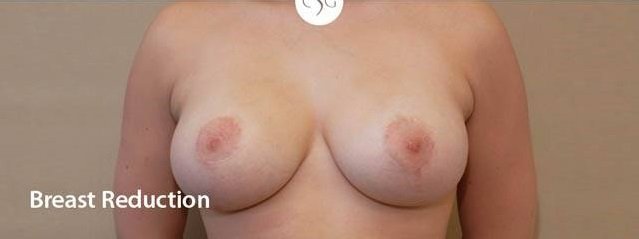
Use the slider on the image to see the results of a breast reduction by Dr. Goldberg
Benefits
Women who undergo Breast Reduction are extremely happy patients, and the relief from years of neck and back pain is immediate. The reduction allows women to attain an active lifestyle that they otherwise could not, and provides a proportionate body contour that can profoundly affect self-esteem. Most women recover quickly, and report that discomfort after surgery is much less than they expected.
The Procedure
The surgery is done under general anesthetic and requires from 1.5 to 2 hours. Most patients are allowed to go home within 2 hours after their breast implant surgery. After the patient is asleep, Dr. Goldberg injects a large volume of long acting local anesthetic in order to prevent sensitization of pain nerves during surgery, and to minimize discomfort after surgery. The incisions are made and the excess breast and fat tissue are removed. The nipple is carefully protected on a bridge of tissue in order to maintain the nerves, lactation ducts and blood supply. At this point liposuction is performed on the breast and chest to contour the shape and eliminate fat pockets. The nipple is then lifted to its new position and the skin is closed using dissolvable stitches. A dressing is applied often using one of the patient’s old bras to hold it in place.
Recovery
Dr. Goldberg prescribes several medications to ensure your comfort. These usually include Celecoxib and Percocet to control inflammation and pain, Ondansetron to prevent upset stomach, and Lorazepam (Ativan) to help with sleep if you need it. Swelling and bruising usually maximize around 3 days. You will need to wear something for support such as a sports bra continuously for 4 weeks, which can be removed for showers only. Most people are ready to return to work and light activities by 1 week after surgery. You will need to return for a check-up between 5 and 7 days after surgery. You need to avoid strenuous activity such as heavy lifting, work-outs, and sports for 4 weeks after surgery. Breast shape is not natural immediately after surgery. After 4 weeks it has largely settled, but ultimately the shape will continue to develop for about 6 months before the final shape is established.
Risks
There are general risks with Breast Reduction such as bruising, bleeding, infection, and risks associated with general anesthetic. There are also some specific risks. The nipple is moved and left attached by a bridge of tissue to keep the blood supply, lactation ducts, and nerves for sensation. Sometimes this bridge isn’t adequate, and there can be a change in nipple sensation. Though most often temporary, this can be permanent. Approximately 50% of women are unable to breast feed for a variety of reasons. This risk does not change after Breast Reduction. Very rarely not enough blood is flowing to the nipple and part or even all of it may not survive, in which case it may need to be removed. This is exceedingly rare, and is more likely if you are a smoker. This surgery can correct asymmetry to a certain extent. However, some pre-existing asymmetry may persist. Also, it is possible that the surgery will result in minor asymmetry, though great care is taken to avoid this by doing precise planning and measurements before and during surgery. The scars usually heal well, and are minimally noticeable, but a small percentage of the population will develop thickened or keloid type scars. Because the skin is folded at the base of the breast near the fold, there can be some minor puckering of the skin at this site. It may require as long as 6 months to diminish. In some people a small revision procedure under local anesthetic may be needed to remove some extra skin at this site. Although breast tissue cannot regrow, if you gain weight after surgery the size of your breasts will also increase. Similarly, if you lose weight your breasts will decerease in size as they normally would. It is important for you to discuss these and other risks with Dr. Goldberg before proceeding with surgery.
Alternatives
Most women who consider Breast Reduction have exhausted non-surgical alternatives such as support bras and custom-made bras to help with their comfort. Some women who have extremely large breasts require a reduction that uses both a vertical incision and also another longer one than runs across the fold under the breast (shaped like an inverted “T”). The decision of what technique is best for you is made during a careful discussion with Dr. Goldberg.

 Face
Face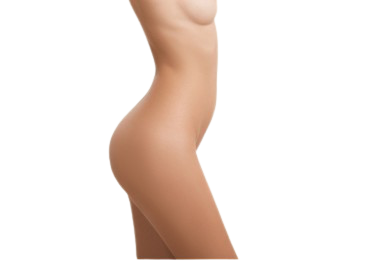 Body
Body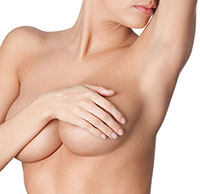 Breast
Breast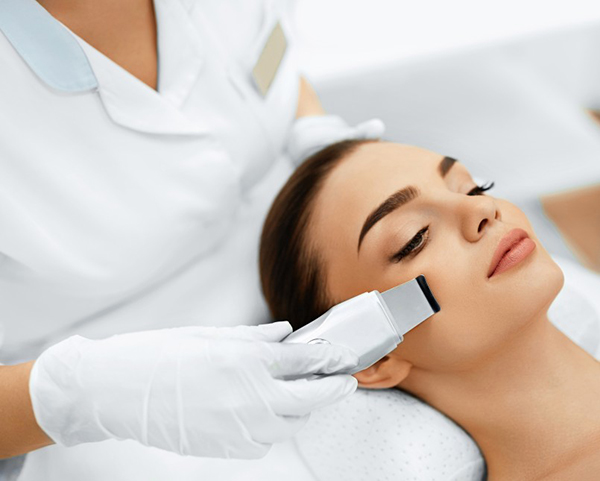 Non-Surgical
Non-Surgical Hair Transplants
Hair Transplants Dr. Cory S. Goldberg
Dr. Cory S. Goldberg Our Staff
Our Staff Policies
Policies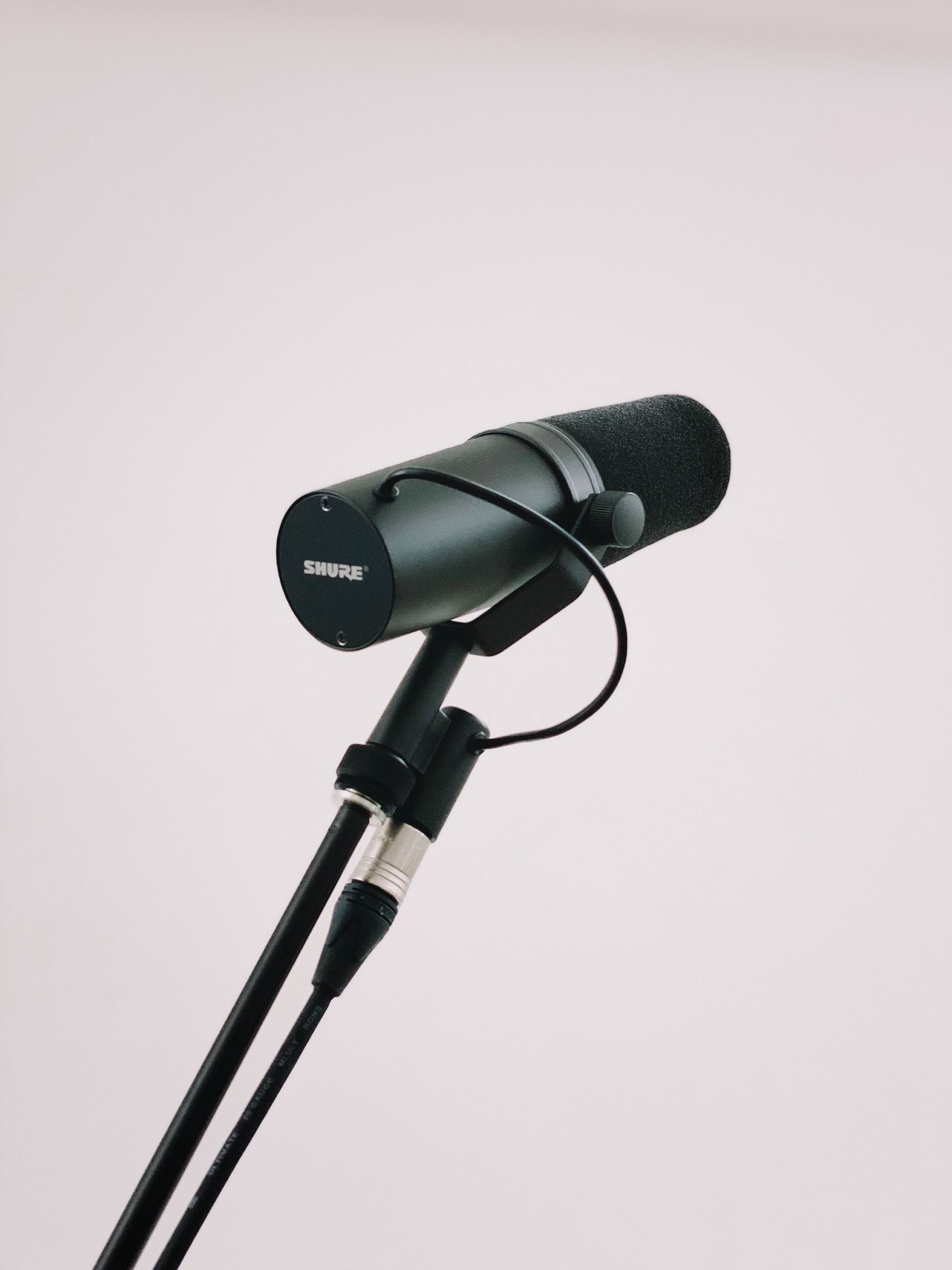 Media
Media Reviews
Reviews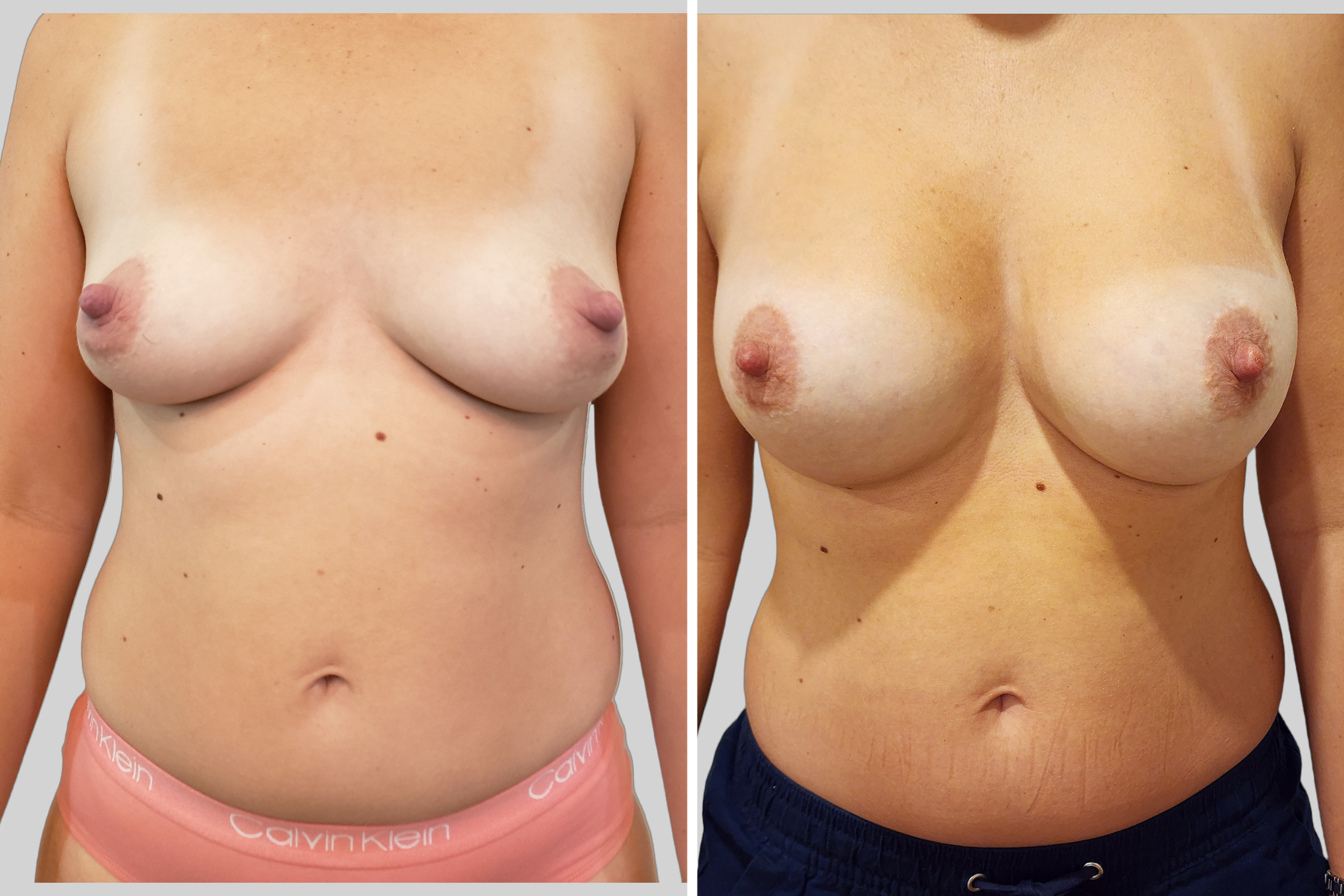 Breast Gallery
Breast Gallery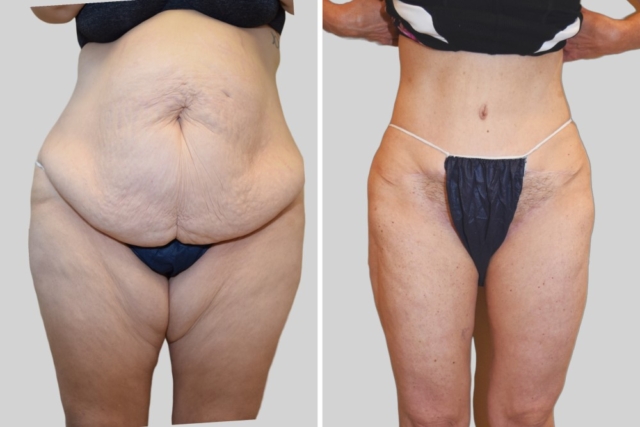 Body Gallery
Body Gallery